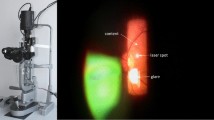Abstract
The creation of retinal mosaics from sets of fundus photographs can significantly reduce the time spent on the diabetic retinopathy (DR) screening, because through mosaic analysis the ophthalmologists can examine several portions of the eye at a single glance and, consequently, detect and grade DR more easily. Like most of the methods described in the literature, this methodology includes two main steps: image registration and image blending. In the registration step, relevant keypoints are detected on all images, the transformation matrices are estimated based on the correspondences between those keypoints and the images are reprojected into the same coordinate system. However, the main contributions of this work are in the blending step. In order to combine the overlapping images, a color compensation is applied to those images and a distance-based map of weights is computed for each one. The methodology is applied to two different datasets and the mosaics obtained for one of them are visually compared with the results of two state-of-the-art methods. The mosaics obtained with our method present good quality and they can be used for DR grading.
Access this chapter
Tax calculation will be finalised at checkout
Purchases are for personal use only
Similar content being viewed by others
References
Adal, K.M., Ensing, R.M., Couvert, R., van Etten, P., Martinez, J.P., Vermeer, K.A., van Vliet, L.J.: A hierarchical coarse-to-fine approach for fundus image registration. In: Ourselin, S., Modat, M. (eds.) WBIR 2014. LNCS, vol. 8545, pp. 93–102. Springer, Cham (2014). https://doi.org/10.1007/978-3-319-08554-8_10
Adal, K.M., van Etten, P.G., Martinez, J.P., van Vliet, L.J., Vermeer, K.A.: Accuracy assessment of intra- and intervisit fundus image registration for diabetic retinopathy screening. Invest. Ophthalmol. Vis. Sci. 56(3), 1805–1812 (2015). https://doi.org/10.1167/iovs.14-15949
Fischler, M.A., Bolles, R.C.: Random sample consensus: a paradigm for model fitting with applications to image analysis and automated cartography. Commun. ACM 24(6), 381–395 (1981). https://doi.org/10.1145/358669.358692
Ghosh, D., Kaabouch, N.: A survey on image mosaicing techniques. J. Vis. Commun. Image Represent. 34, 1–11 (2016). https://doi.org/10.1016/j.jvcir.2015.10.014
Hernandez-Matas, C., Zabulis, X., Triantafyllou, A., Anyfanti, P., Argyros, A.A.: Retinal image registration under the assumption of a spherical eye. Comput. Med. Imaging Graph. 55, 95–105 (2017). https://doi.org/10.1016/j.compmedimag.2016.06.006
Jelinek, H., Cree, M.: Automated Image Detection of Retinal Pathology. CRC Press, Boca Raton (2009)
Lee, R., Wong, T.Y., Sabanayagam, C.: Epidemiology of diabetic retinopathy, diabetic macular edema and related vision loss. Eye Vis. 2(1), 17 (2015). https://doi.org/10.1186/s40662-015-0026-2
Legg, P.A., Rosin, P.L., Marshall, D., Morgan, J.E.: Improving accuracy and efficiency of mutual information for multi-modal retinal image registration using adaptive probability density estimation. Comput. Med. Imaging Graph. 37(7), 597–606 (2013). https://doi.org/10.1016/j.compmedimag.2013.08.004
Lowe, D.G.: Distinctive image features from scale-invariant keypoints. Int. J. Comput. Vis. 60(2), 91–110 (2004). https://doi.org/10.1023/B:VISI.0000029664.99615.94
Matsopoulos, G.K., Asvestas, P.A., Mouravliansky, N.A., Delibasis, K.K.: Multimodal registration of retinal images using self organizing maps. IEEE Trans. Med. Imaging 23(12), 1557–1563 (2004). https://doi.org/10.1109/TMI.2004.836547
Stewart, C.V., Tsai, C.L., Roysam, B.: The dual-bootstrap iterative closest point algorithm with application to retinal image registration. IEEE Trans. Med. Imaging 22(11), 1379–1394 (2003). https://doi.org/10.1109/TMI.2003.819276
Acknowledgments
This work is financed by the ERDF - European Regional Development Fund through the Operational Programme for Competitiveness and Internationalisation - COMPETE 2020 Programme, and by National Funds through the FCT - Fundação para a Ciência e a Tecnologia within project CMUP-ERI/TIC/0028/2014.
Author information
Authors and Affiliations
Corresponding author
Editor information
Editors and Affiliations
Rights and permissions
Copyright information
© 2018 Springer International Publishing AG, part of Springer Nature
About this paper
Cite this paper
Melo, T., Mendonça, A.M., Campilho, A. (2018). Creation of Retinal Mosaics for Diabetic Retinopathy Screening: A Comparative Study. In: Campilho, A., Karray, F., ter Haar Romeny, B. (eds) Image Analysis and Recognition. ICIAR 2018. Lecture Notes in Computer Science(), vol 10882. Springer, Cham. https://doi.org/10.1007/978-3-319-93000-8_76
Download citation
DOI: https://doi.org/10.1007/978-3-319-93000-8_76
Published:
Publisher Name: Springer, Cham
Print ISBN: 978-3-319-92999-6
Online ISBN: 978-3-319-93000-8
eBook Packages: Computer ScienceComputer Science (R0)




